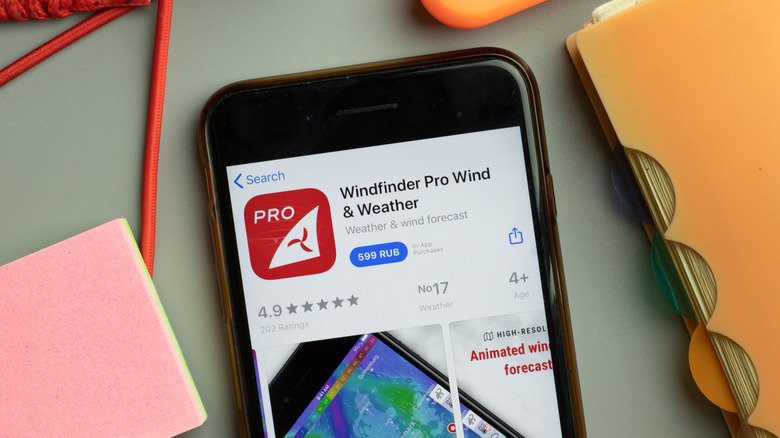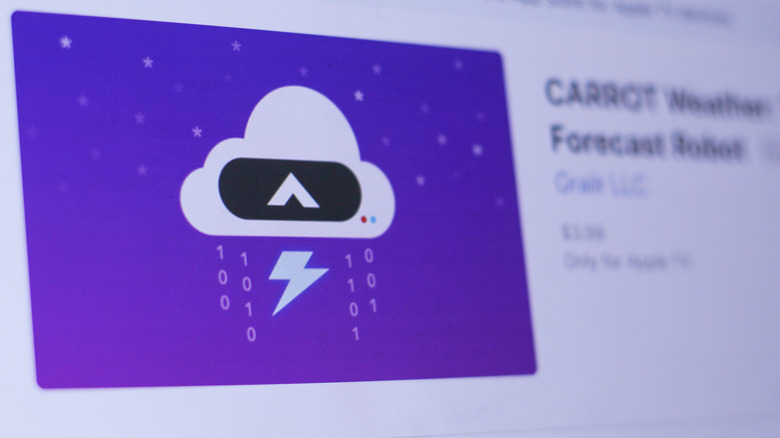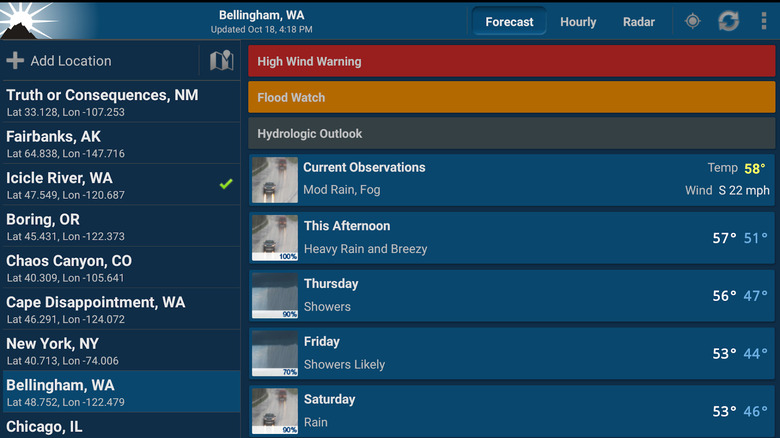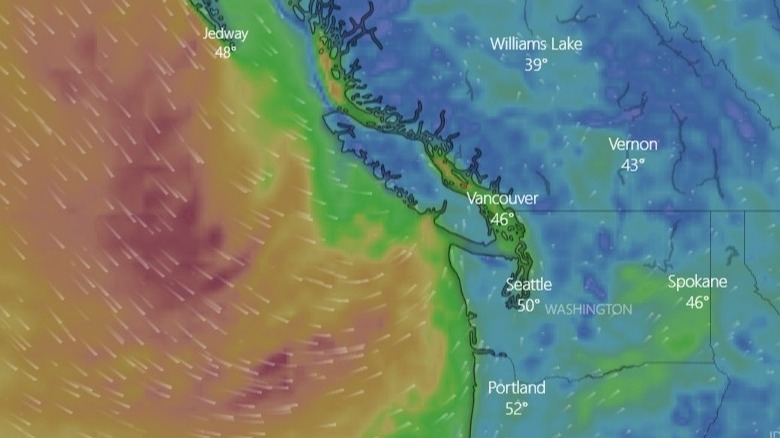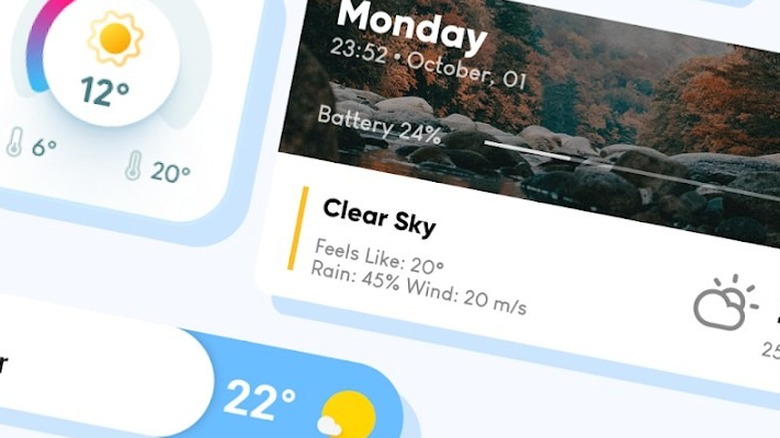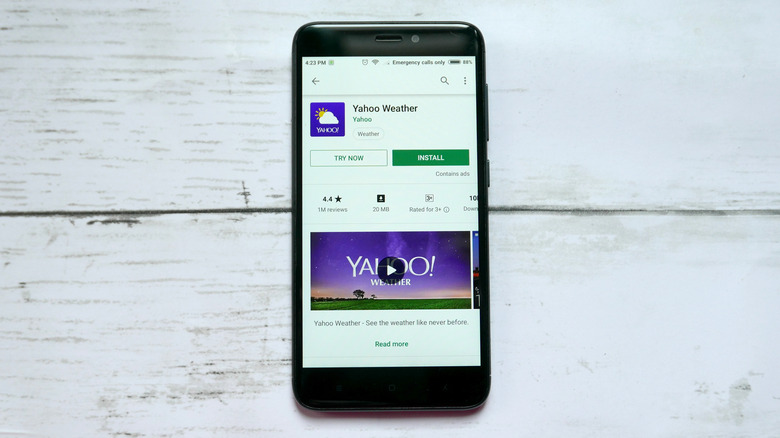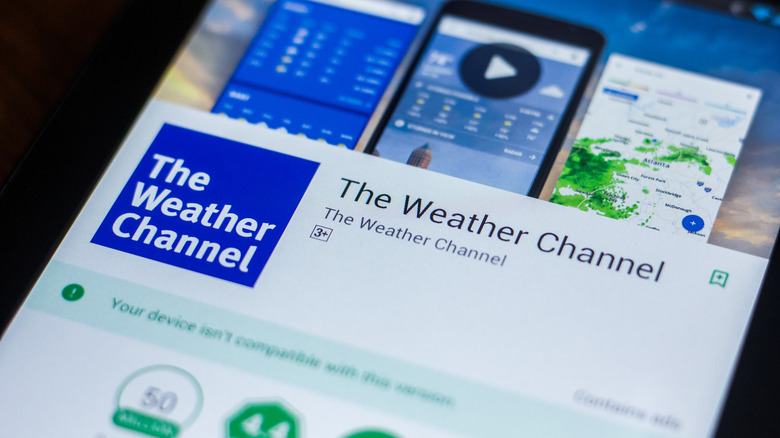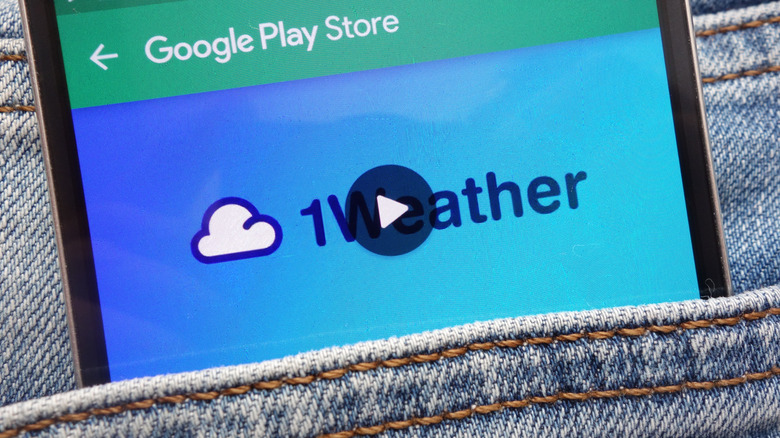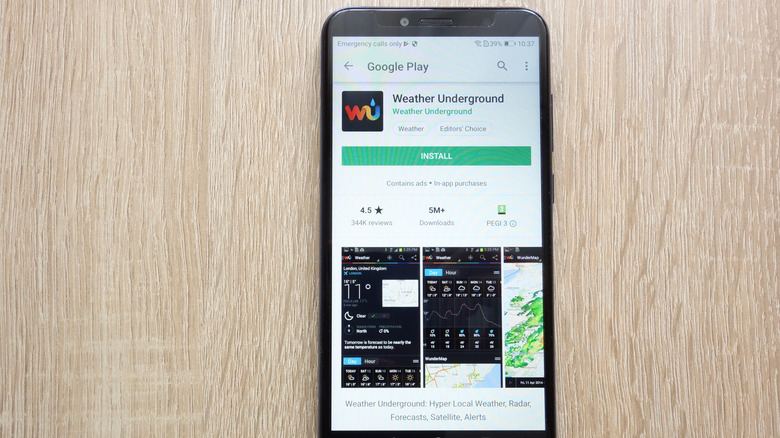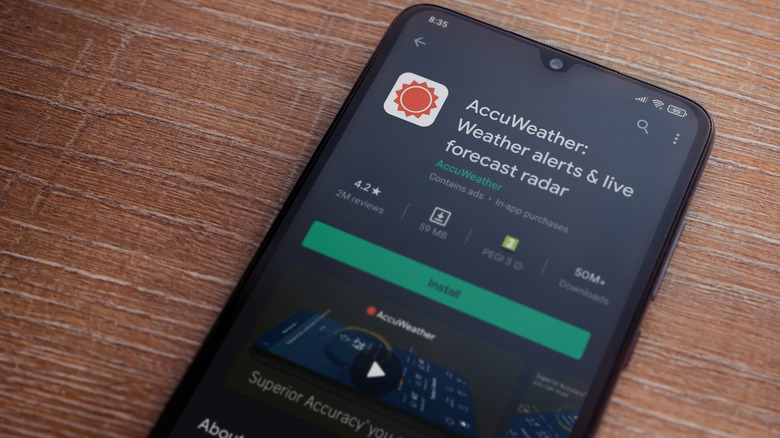10 Best Weather Apps And Widgets For Android In 2022
Every Android user has an included weather app as one of their default applications, and for the most part, this works just fine. That said, dedicated apps are available that do the job much better than Google's standard offering, with more detailed data, more intuitive interfaces, and better aesthetics.
Having a weather app at your fingertips is one of the most valuable features you can find on your Android smartphone. You do not have to wait for scheduled updates; you can check real-time forecasts and track weather patterns as they occur. Forecasted data can be accessed at hourly, daily, or weekly intervals, making it easier to plan outdoor events and excursions with greater precision. Useful atmospheric information, such as pollen count, air quality, UV index, and humidity, are often readily available for your exact location.
With today's ever-changing climate, weather apps are even more essential, as they broadcast extreme weather warnings and send updates on the spread of wildfires, flooding, and other potentially life-threatening events. Whether you are a daily commuter, an avid hiker, play outdoor sports, or a round-the-world sailor, there is a weather app to suit your needs, most of which have an accompanying widget to provide basic weather information at a glance. Here is our list of the best currently-available weather apps and widgets for Android devices.
Windfinder
Windfinder is a niche app that uses the coastal weather station closest to your selected location to provide weather information and tide and wave data when applicable. Designed with nautical pursuits in mind, this app is ideal for surfers, sailors, kite surfers, or anyone that needs to know the state of the wind and tide anywhere in the world. Even if you are not a water sports enthusiast, this app is helpful for anyone traveling via sea, coastal hikers, or beachgoers planning a trip in the near future.
The paid Windfinder Plus option has advanced features, including severe weather warnings, forecast modeling, high-resolution maps, a webcam layer to see live weather conditions in many popular destinations, and locally-sourced air pressure measurements. However, the free app offers plenty of helpful information without committing to the $4.99 yearly fee.
Without a subscription, there is a small floating advertisement bar near the menu at the app's base, but it is not intrusive and doesn't impose on the displayed information. You can store multiple favorite locations for quick access, which is handy for comparing conditions while planning your trip. Once you select your location, you are presented with hourly wind speed and direction, weather conditions, air temperature, wave height, and tide height information for the next ten days. You can choose to view wind information as a chart, and its radar map imagery is highly detailed with animated wind indicators and color-coded intensity levels.
Carrot Weather
Carrot Weather brings a healthy dose of humor to its weather app, giving users a break from the mundane subject matter with its humorous and often sarcastic updates. What was originally an exclusively iOS offering has now made the leap to the Android platform, retaining all the features that made it so popular with Apple users. This is all the more welcome, given that the Cupertino company purchased the Dark Sky weather app, which is on a similar level, both aesthetically and functionally.
By default, Carrot Weather uses the competent Foreca company for its data sources; however, premium subscribers can choose from a list of providers, including AccuWeather, AerisWeather, ClimaCell, and MeteoGroup. Despite its lighthearted approach to forecasting, the app provides alerts on serious weather issues, such as excessive rain, storm cells, lightning strikes, excessive snowfall, and more. It also relays government alerts to users and has a useful hurricane tracker to inform you of storm developments in real-time.
Carrot Weather is a little lacking in the widget department, with just two options in 5x2 and 4x3 dimensions. Only basic weather information is available, and customization is limited, but it does provide a summary in message form, using the app's characteristically comical delivery.
NOAA Weather Unofficial
The app known as NOAA Weather Unofficial uses reliable sources, namely the NOAA and National Weather Service, to provide up-to-date information for any global location or several locations at once. Updates can be requested between fifteen-minute and four-hour intervals, or you can set a time to receive your forecast. Most notably, there are many different preferences, so you can tailor the app to suit your requirements, and if you decide you like it, you can elect to pay the reasonable one-off fee of $1.99 for the clean, ad-free version.
One of the best features of this app is the many different configurations to choose from. Swipe left to call up the menu, and there are checkboxes to select the data you wish to receive. Options include temperature, apparent temperature, dew point, wind speed, wind gusts, the chance of precipitation, humidity, and cloud cover, all presented at hourly intervals. There are also precipitation charts and radar maps for a detailed overview of conditions. You can also use the app to track severe weather conditions, although it doesn't currently issue alerts.
Another benefit of the NOAA Weather Unofficial app is the five widgets on offer. These range between 1x1, 2x1, 5x1, and 4x2 in size and display basic information that can be refreshed with a single touch. Weather can be set to forecast a selected location or automatically detect your location if preferred.
Windy
Windy is a visually appealing app that, as the name suggests, focuses on wind patterns and has hurricane-tracking functionality, making it all the more useful in today's changing climate. With hurricanes, tornadoes, and electrical storms becoming more frequent with each passing year, according to NASA, this app is worth considering, especially if you live in or near a hotspot where these events are likely to occur.
The app's interface is built around a choice of over 40 maps that display a range of data, such as temperature, cloud cover, precipitation, and thunderstorm patterns. While Windy used to be a subscription-only offering, there is now a free version, which can be upgraded to Windy Premium for an $18.99 yearly fee.
Windy offers a choice of three widgets. Two in 4x2 dimensions present either a four-day or single-day forecast, and a smaller 2x2 option displays an animated weather chart. These can be customized, albeit slightly, by changing their dimensions or switching between light and dark backgrounds.
Overdrop
Overdrop allows users to choose between weather providers AccuWeather and WeatherBit, depending on which they deem to be most accurate in their area. The app's interface is sparsely designed, making it a good choice for those that don't like clutter and prefer well-presented basic information to a large body of data.
Aesthetically speaking, Overdrop is one of the better-looking weather apps with seven artistic themes displaying hyperlocal weather, switching to customizable radar maps presenting a range of weather patterns. While its forecasting is more rudimentary than many alternatives, Overdrop brings you the outlook in real-time, plus daily and weekly forecasts, and it issues severe weather warnings, which is good enough for most folks' requirements.
Unlike the other choices in our list, Overdrop is just as appealing for its widgets as the app itself. Widget-wise, there are too many choices to mention (over 60 in total), each offering a choice of design, weather information, and size. A free version is available, but it contains ads, making it less visually attractive. If you choose to go for an ad-free paid plan, you can opt to pay $1.49 per month or $7.99 for the entire year. Alternatively, you can buy it outright for $17.99.
Yahoo Weather
Yahoo Weather was reported in SlashGear as far back as 2013, and the media and tech giant continues to provide one of the most user-friendly apps in the Play Store. Its aesthetically-pleasing interface that uses backgrounds sourced from the online image directory Flickr adds to its appeal, as this keeps the app feeling fresh when used regularly. It is also one of the few free apps that don't feature ads, so its backdrop remains neat and clean, and the focus is very much on the information at hand.
Yahoo Weather may not be for you if you need an app that covers more than simply the basics. For example, you cannot save travel routes, it doesn't provide a pollen count forecast, there is no information on sea level, risk of ice, or the dew point, and there is no weather news section. However, it provides data for air quality, humidity, visibility, UV index, sunrise and sunset, moon phases, wind speed, and the chance of precipitation. Users also receive daily coronavirus updates for both local and national statistics. Yahoo Weather's panels can be positioned in any order as the user sees fit, a handy feature that is sadly lacking in some other popular apps.
Somewhat disappointingly, Yahoo Weather only offers three widgets with no customization options for an app that is so visually appealing. These are available in 1x2, 2x2, and 5x2 configurations, with the most prominent displaying location, weather outlook, temperature, and the last updated time. The smallest simply displays a weather icon for the current conditions, temperature, and location.
The Weather Channel
The Weather Channel app likely took a little inspiration from Yahoo Weather regarding the layout and location-based background images. However, unlike Yahoo, the free app is quite advertisement-heavy, and some users may find this distracting. It redeems itself by offering a wide range of features, some of which cannot be found on paid alternatives, and an intuitive, well-laid-out interface that makes using it a breeze (pun not intended).
These features include severe weather warnings, airport delay information, and warning for high pollen and other atmospheric conditions that may affect your day-to-day activities, such as a mosquito index, sweat index, and dry skin index. The Weather Channel app also has a social reporting feature that enables local users to update the weather conditions in their area via icons, tweets, photos, and videos, so even if you don't fully trust its weather charts, you might find a second opinion for peace of mind. All this contributes to this being one of the most popular weather apps in existence, with over 45 million monthly users, according to Appfigures.
There's a good choice of widgets for the Weather Channel app, with 1x1, 2x3, 4x1, a resizable 5x1, 4x3, and 5x3 options available, with the latter including a detailed weather map. Premium subscribers are treated to an ad-free interface, a 192-hour forecast, a 72-hour future radar, updates every 15 minutes, wind stream information, and 30-mile lightning alerts, albeit for the comparatively-hefty fee of $29.99 per year.
1Weather
1Weather is one of the most popular apps, with its uncluttered interface and a wide range of features. This comprehensive solution is ideal for both casually checking the weather and taking a deep dive into radar mapping for detailed reports. It also has some interesting additions, such as the Weather TV feature that showcases different meteorological conditions around the country and helpful lifestyle suggestions based on your upcoming forecast. Reliable data for this app is provided by CTN WeatherOps, with maps provided by Google.
Right off the bat, there is temperature, rain, and wind information at the top of the screen, with tiles below displaying precipitation, humidity, visibility, dew point, and pressure level at a glance. Below is a handy toggle to switch between hourly and daily forecasts easily. Scroll a little further down, and you have all the app's main features linked via large infographic panels. Users can opt to receive alerts for severe conditions and use minute-by-minute updates to plan accordingly. Free app users might find the multiple ads on every page annoying, but for those willing to pay for a $1.99 monthly subscription, these make way for one of the most well-thought-out options on this list.
The app is bolstered by an impressive range of 12 widgets, representing every dimension you could hope for. While most focus on primary weather conditions, some offer clocks, dates, and more detailed weather reporting. In fact, 1Weather holds our current record for the most information to be found on a single 4x1 weather widget!
Weather Underground
The Weather Underground app has a very loyal following, and for good reason. Established by meteorologists and active since 2011, the app receives one of the highest rankings by Appbrain and is in its top 1% with over half a million ratings. The company is widely praised for its accuracy and, as such, is highly rated by those who enjoy outdoor pursuits, from camping and picnics to more serious outbound activities such as hiking and mountaineering.
Weather Underground's success led to it being bought by IBM, where it has continued to go from strength to strength and has reached a broad user base. It even provides weather data for third-party app providers, including the Funny or Die weather app. Like the Waze traffic app, the WU app uses community reporting to provide accurate updates on weather conditions. To date, over 250,000 members regularly contribute data in real-time to better serve the Weather Underground app and its users.
As far as features are concerned, Weather Underground has plenty to offer, having worked hard to provide as much information as possible in a well-designed interface that doesn't feel cluttered and is easy to navigate. We especially like the graphic displays for various weather data, with temperature, wind, and precipitation taking center stage, plus an expandable field for atmospheric information. It also offers a detailed weather radar and map, which can be configured with several layers, such as severe weather warnings, weather stations, surface fronts, a satellite view, and a color-coded temperature overview.
Weather Underground offers just one widget in 2x3 dimensions. While this does present some basic data, you will find it most useful as a quick way to access the app for an in-depth analysis of the weather conditions.
AccuWeather
Founded in 1962, AccuWeather has been at the forefront of modern weather forecasting for quite some time. It has since brought us one of the most instantly-recognizable weather apps that combines various data with an intuitive interface and is one of the most popularly-ranked weather apps, according to YouGov. The accuracy of AccuWeather's data is such that many other apps choose to use the company as its forecasting data provider, and the World Meteorological Organization has lauded it with multiple awards.
Upon opening the app, you are greeted with an overview, including temperature, relative "RealFeel" temperature, and a countdown clock for the next major weather event, with color-coded markers to indicate each condition and its intensity level. Tiles showing the upcoming conditions for the remainder of the day are below this, followed by a comprehensive list that features wind conditions, atmospheric conditions, humidity, sun and moon indexes, cloud cover, and visibility. Panels for air quality and allergy outlook are also on the "Today" tab, with additional links to hourly, daily, and radar map forecasts in the bottom menu.
In short, the AccuWeather app leaves little to be desired, although some users of the free version may find the full-page popup ads annoying when switching between menu tabs. If you wish to spring for the premium version (an $8.99 annual fee or $0.99 monthly), you get the ad-free interface, as is typical, as well as AccuWeather's hyperlocal forecast functionality and more detailed reporting. Widgets are a little thin on the ground here, with 4 in total. We found the current forecast widget to be the most useful of these as it brings you alerts, a written weather summary, temperature, and a general outlook.

